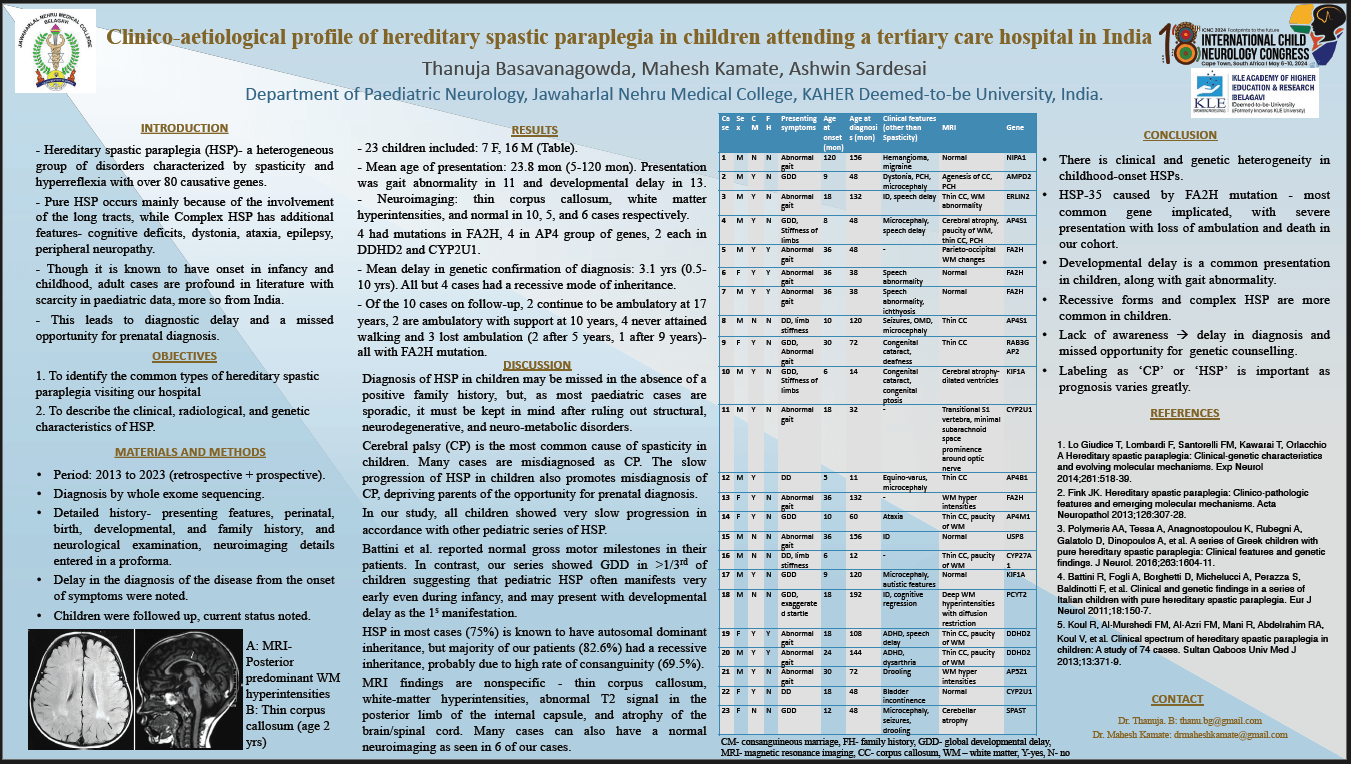Clinico-aetiological Profile Of Hereditary Spastic Paraplegia In Children Attending A Tertiary Care Hospital In India
Introduction: Hereditary spastic paraplegia (HSP) is a heterogeneous group of neurological disorders characterized by spasticity and hyperreflexia with over 80 causative genes. However, there is scarce literature on HSP in children from India.
Methods: History, examination, and follow-up of children with HSP were analyzed from 2013 to 2023.
Results: 23 children were diagnosed with HSP based on Whole Exome Sequencing (Table-1). 4 had mutations in FA2H gene, 4 in AP4 group of genes, 2 each with DDHD2 and CYP2U1 mutations. The mean age of presentation was 23.8 months (5-120 months). 7 were females and 16 were males. The presentation was gait abnormality in 11 and developmental delay in 13 children. The mean delay in genetic confirmation of diagnosis was 3.1 years (0.5-10 years). Neuroimaging showed thin corpus callosum and white matter hyperintensities in 9 and 4 cases and was normal in 7 children. All but 4 cases had a recessive mode of inheritance. Of the 10 cases on follow-up, 2 continue to be ambulatory at 17 years, 2 are ambulatory with support at 10 years, 4 never attained walking and 3 lost ambulation (2 after 5 years, 1 after 9 years)- all with FA2H mutation.
Conclusion: Hereditary spastic paraplegia-35 caused by FA2H mutation is the most common variant, and is associated with severe presentation with loss of ambulation and death. Developmental delay is a common mode of presentation. Recessive forms and complex HSP is more common in children. Lack of awareness may result in delay in diagnosis.
Thanuja Basavanagowda
Jawaharlal Nehru Medical College
India
Mahesh Kamate
Jawaharlal Nehru Medical College
India
Ashwin Sardesai
Jawaharlal Nehru Medicla College
India

Thanuja Basavanagowda
Jawaharlal Nehru Medical College
India